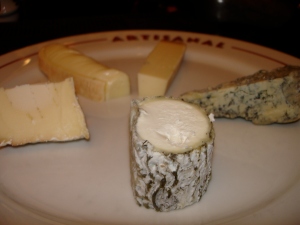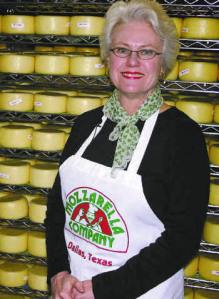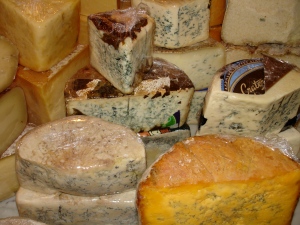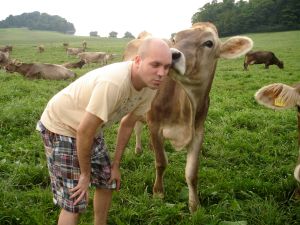Today in el Senor Queso I get to interview a great woman, passionate, well-traveled and incredibly driven. I met Michele Buster years ago in Louisville, Kentucky during the ACS conference in 2005. We have been very close since then, whether it is in cheese conferences or festivals, or at shindigs in her lovely apartment, we enjoy each others company. As the co-founder of Forever Cheese, she has been instrumental in developing markets for cheeses and brands in this country. Her remarkable palate and tenacity are admirable. I am extremely happy to feature her in my blog today.
Questions for Michele:
1.- How did you end up in Cheese?
I am in cheese because I fell in love with a cheese guy. I met Pier luigi while I was working in Italy organizing the Golf World Cup. We started going out and it was really good very fast. Then he went to study English in NY and look after the business a bit working with his importer. I went back to Spain where I lived and worked and after the Olympics in Barcelona, I did not want a long distance relationship anymore, so I moved to NY to be with Pier luigi and when he was repeatedly unhappy with his market coverage of his family’s cheese, we decided to do it ourselves. I told him if he taught me cheese, i would put it where it needed to be. He was a visionary and saw specialty markets as the way of the future and not the ethnic industry.
My only deal with him was that if we were successful, he had to let me go to Spain and find what I deemed to be a good representative of Manchego, as I did not like what was available in the market then.
2.- Are there any interesting countries coming up with cheeses that we may not be aware of?
For me ,Croatia; I am focused on Paski Sir which is from there. There is still a long way to go to get people familiar with the country and to get Croatians to speak up and support the fact that they have great ingredients! I do things one step at a time so first, I will build this cheese and then I’ll see. I am a bit well-known there and on Pag island I have been in several newspapers and on Tv. Haha.
3.-As the ultimate professional, Is there anything that you have not achieved yet in your career?
I feel that I have achieved more than I have ever set out to do. As I mentioned, the initial goal was to put the Sini Family cheeses on the map and in the right places we did that. The ultimate goal was to distinguish Fulvi as a Pecorino from Rome, one so different from the rest- we have done that to a good degree in our marketplace, which is what we strived for and are now working on the consumer aspect.
I went out and found the best Manchego and have been instrumental in making it an extremely popular cheese in this country and along the way, paved the way for a myriad of other spanish cheeses and built awareness for the Spanish category as a whole. To boot, after finding and bringing my beloved Marcona Almonds here and helping to create the new yuppy crack, I now have gotten my producers to make the most wonderful Marcona Almond Butter which I have been dreaming of for a few years.
Now I am working on introducing the Dehesa Cordobesa (R) line of cured Iberico pork which will take a lot of time and education. This is very much a work in progress along with building awareness for the Paska Sirana Paski Sir from Pag Island, Croatia.
4.-Can you tell us some of your best cheese pairings?
Haha, if truth be told, I am a bit peculiar about all of that. Just like I like my cheese separate from my pasta, I like my cheese standing alone!! so I will have the cheese first and then the accompaniment. But some of my favorites are not even cheese.
Casa Forcello Plum Smoked Tea Compote and Lardo Iberico
Casa Forcello Plum Mostarda and duck of any kind
Mitica (R) Arrope over fresh cheese or Ice cream
Mitica Candied Bitter Lemon and Pecorino
Cacio di Roma (R) Casa Forcello Crab Apple Mostarda.
5.-You have traveled the world, Any spots you are looking to visit soon?
I want to go to many places still; Chiapas and Veracruz in Mexico; South Africa; Laos; Cambodia; Mongolia, Colombia, Ecuador, Paraguay, the National Parks that I am missing; Indonesia; Northern France, Hungary- get the picture 😉
6.-If you were not involved in cheese, What would you envision yourself doing?
Managing rock bands; doing a radio program.












